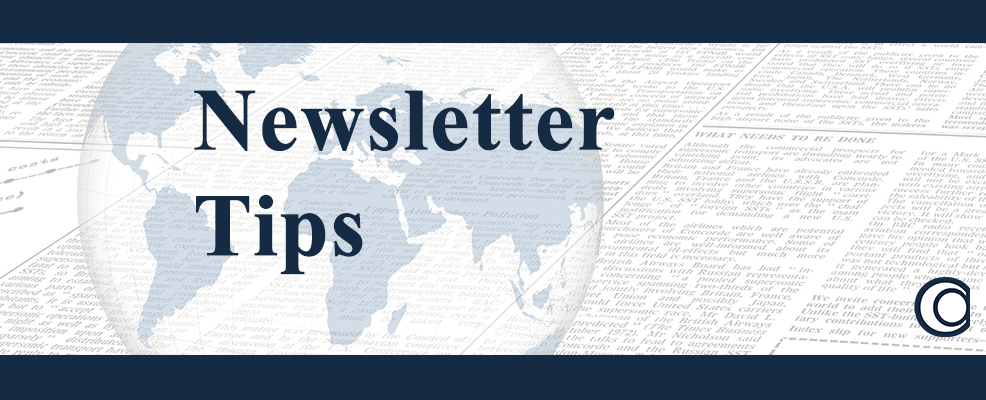Content marketing is one of the most common strategies used for enhancing engagement. A newsletter is one of the strongest pillars of content marketing. Not only it helps in maximizing the revenue, but it also establishes a direct connection with the customer. A newsletter creates brand awareness by delivering all the latest updates timely.
What are newsletters?
In easy language, newsletters are emails having sufficient information to update customers about the products and services. Using newsletters, companies can also share the latest insights and offers. This helps in nurturing the relationship with customers and increasing the ROI (Return on Investment). Newsletters are generally used in combinations for better results. So, as per the need, marketers use them.
How to prepare a newsletter?
Preparing a newsletter is not a difficult job. Using modern tools, any business can target its audience and avail benefits. For small businesses, there are free tools available. Though, certain features are paid but free features are enough to boost the initial phase. To help you get started, we’ve created a detailed guide about how to prepare a newsletter:
Finalize your strategy: Before setting up a tool, you should finalize your strategy. This helps in avoiding ambiguity. A successful newsletter is audience-specific, goal-oriented, and supports a long-term marketing strategy. Try discussing the following questions with the team and you’ll be able to figure out the exact strategy you need:
How big is the customer base and how you are fulfilling their needs?
What are your expectations with the newsletter campaign? For example, lead generation, providing the latest updates to customers, high conversions, web traffic, etc.
How frequently are you going to send newsletters?
How are your subscribers getting benefited from newsletters? For example, are they getting discount coupons or personalized offers?
Choose a software: Creating a newsletter is just half story and sending it smoothly is another half. If you are Choosing applications like Gmail or Outlook then your emails won’t be delivered smoothly initially. The delivery of emails is affected by a few factors like your reputation as a sender, the level of content, the power of a domain, and the IP addresses used. Also, there are high chances of campaigns being flagged if they’re not authenticated. That’s why dedicated email marketing applications are important.
An ideal email marketing tool should serve as:
- An email service provider (ESP)
- Completes the job of authentication.
- Provide analytics regarding campaigns having factors like open rates, bounce rates, click-through rates, complying with the GDPR campaigns, and creating a mailing list.
Preview campaign: The first step after figuring out your perquisites is setting up an email list. Thus email list should have emails of the audience you want to target. However, as per the goal you have to alter them. Your email list should only have people who’ve given their consent. That’s because adding people without consent affects the deliverability. The exact statistics are never shared. This way you should never purchase any existing mailing lists unless you’re 100% sure it’s genuine. With setting up the lists, management is also important. For this, you can use tools like CRM (Customer Relationship Management) or email management.
Try to connect your CRM to your website as only this way you’d be able to find 100% genuine leads. For this, add a Subscribe to Newsletter option on your website. Place it accordingly so maximum people can provide the information. Now, this information should be added by default to your web portal. Manually completing this task takes a lot of time and automation reduces it. That’s how Turn Around Time (TAT) decreases.
Attract subscribers: Attracting subscribers is the best way to increase the number of leads. Since you’ve already designed your form for the website, use that in social media campaigns as well. You can collect genuine email addresses which may result in high deliverability. Adding features like Chat-bot, live chat magnets, and lead magnets can also help in collecting the credentials of users. However, you should use lead collection stuff to a limit. That’s because this may disrupt the browsing experience of users. SEO rankings may also get affected because of this. Accordingly, the value of the domain can decrease.
Test the emails: Once the emails are done, testing them is very important. As there are different browsers and applications, it is important to understand the views. For example, if any user has an old version of the browser then the updated format is not supported. Here, he won’t be able to see the email with the correct placement of attributes. Hence, adding links to the emails is very helpful.
Shoot your newsletter and analyze results: Once your email is tested, shoot it and wait for the results. Use tools to analyze the bounce rate, click-through rates, and open rates.
Why is it important to have a newsletter for branding?
A newsletter opens door to the information and a better understanding of the products. Advertisements cannot fulfill the gap between what a company offers and what a customer understands. Also, random campaigns don’t have 100% surety if they target the exact audience. However, emails are delivered to the inboxes targeting the exact customer base.
Since emails are easily and highly customized, more flexibility is there. Marketers can create different combinations as per the need.
Why is the purpose of a newsletter?
In layman language, the purpose of a newsletter is to provide the latest updates regarding products and services. Now, as per the requirements, marketers create different combinations to fulfill the needs. A campaign looks like a pushy salesperson while a newsletter is like a helpful friend. According to McKinsey, you have 40% more chances to grow your audience via email marketing in comparison to Facebook, Instagram, or Twitter campaigns.
What are the advantages of email newsletters?
As per the statistics, more than 83% of B2B marketers are using email marketing for reaching customers. Even amongst B2C companies, many marketers prefer using email marketing as it maintains trust. Now to understand why email marketing is important, consider the advantages given below:
Narrowing the list of Quality leads: When Credentials are collected with consent, there are high chances of quick conversions. Accordingly, investment per lead is low.
Schedule as per the need: Emails can be scheduled as per the need. For example, for an occasion, you can configure one email just now for a future date. The application will automatically send it to the respective users. This way there is no need to be fully available at the moment.
High ROI (Return on investment): Low investment per lead and high returns result in high ROI. As per the statistics, 68% of marketers have reported high ROI or excellent. So, basically, more than 2/3rd of the marketers are in favor of email marketing.
Conclusion
Email marketing is one of the most important pillars of content marketing. Email marketing has a totally different approach than social media campaigns. The lead funnel gets narrowed and only quality leads with less investment are there. That’s why a major chunk of marketers prefer this. Also, one major reason for considering email marketing is high flexibility.

